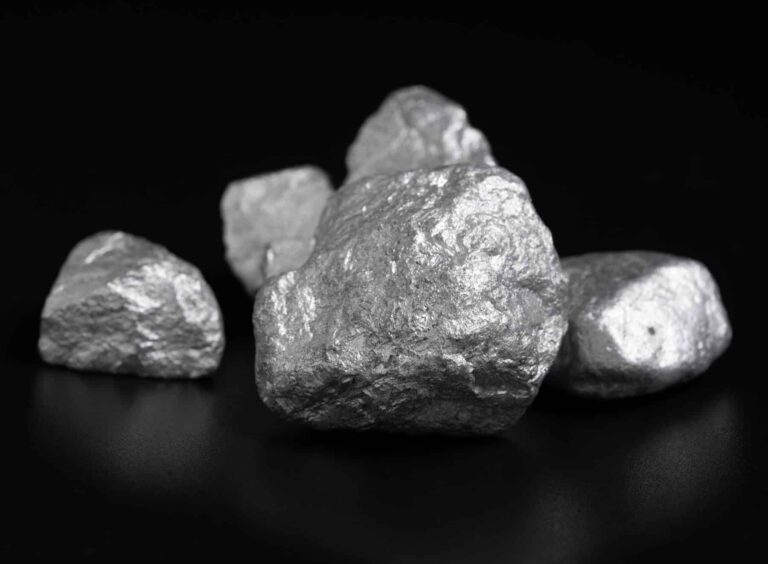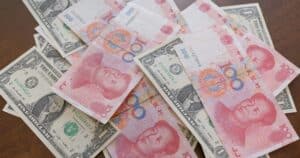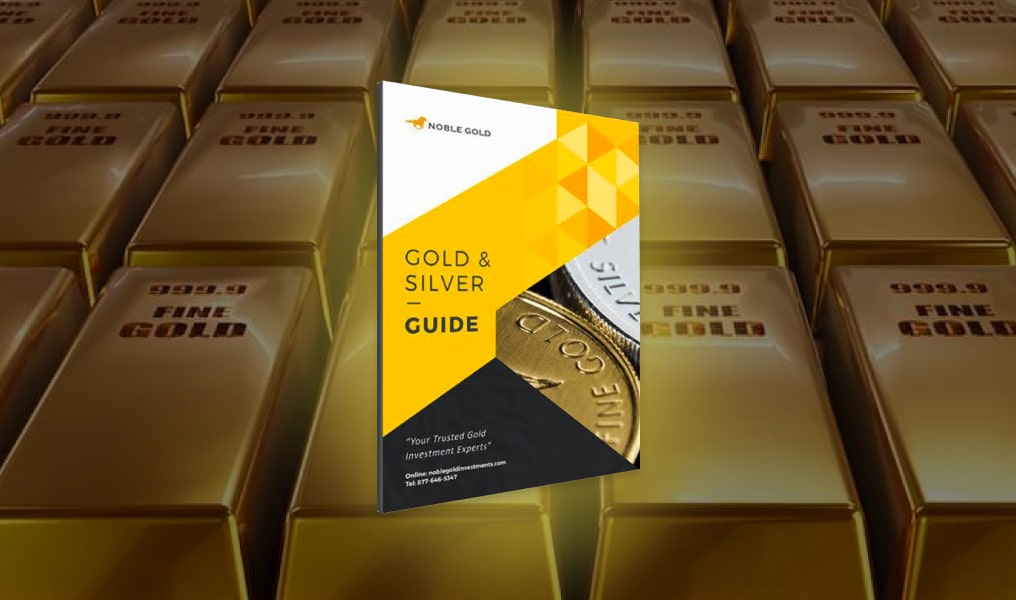Platinum and palladium are considered prestigious precious metals often used in jewelry and investment portfolios. They look similar with their silvery-white sheen but have different properties and market values.
Although similar in color, these metals differ in weight, malleability, tarnish resistance, and melting point, which is important to manufacturers and consumers. Understanding the nuances between platinum and palladium is important for making informed decisions, whether for an elegant piece of jewelry or as part of a diversified investment strategy.
Physical And Chemical Properties
Platinum and palladium are characterized by their unique physical and chemical properties, distinguishing them and determining their various applications. These metals are analyzed by their density, hardness, color, luster, and tarnish resistance, each contributing to their properties.
Density And Hardness
Platinum is known for its high density, measured at 21.45 g/cm³, contributing to its high weight and feel as a metal. On the Mohs hardness scale, it scores between 4 and 4.5, which means that although it is resistant, it can still be scratched by harder substances. Palladium is lighter, has a density of 12.02 g/cm³, and a similar degree of hardness. Although platinum and palladium are softer than many other metals, they are sufficiently durable for jewelry and industrial purposes.
Their different densities influence their use: platinum is preferred for fine jewelry due to its higher density, which can increase its weight and perceived value. On the other hand, palladium’s lighter weight is advantageous for applications where a lighter weight is desirable, such as in certain industrial settings or for larger pieces of jewelry where a lighter metal is more comfortable to wear.
Color And Luster
Platinum is known for its color — a striking silver-white that does not tarnish over time. Its luster can be polished to a remarkable mirror-like finish that is highly sought after in jewelry making. Palladium has a similar silvery-white color but is slightly grayer than platinum. It also has a strong luster, although it may not achieve the same shine as platinum when polished.
Both metals can retain their color and luster over a longer period, which is important for jewelry meant to last a lifetime. The natural white color means that, unlike white gold, they don’t need to be rhodium-plated to maintain their appearance.
Tarnish Resistance
Platinum is highly resistant to corrosion and other chemical reactions that tarnish other metals. Palladium also has excellent tarnish resistance but can react slightly under certain conditions, such as contact with strong acids, although this rarely occurs in normal use.
Tarnish resistance is a key factor in why both metals are so sought after for jewelry and watches and as catalysts in industrial applications. Items made from these metals require minimal care to maintain their esthetics over a long period of time. This durability also contributes to their value in various sectors, such as the automotive industry and chemical processing.
Uses And Applications
Platinum and palladium are precious metals with diverse applications in various industries. Due to their unique properties, they are indispensable in many areas, from automotive manufacturing to fine jewelry design.
Industrial Uses
Platinum and palladium are important components in producing catalytic converters used in the automotive industry to reduce harmful emissions. Platinum and palladium are catalysts that convert toxic gasses from a vehicle’s exhaust into less harmful substances.
In addition to their environmental applications, these metals also play an important role in electronics due to their excellent conductivity. They are used in medicine due to their corrosion resistance and biocompatibility.
Fine Jewelry
In the jewelry industry, platinum is highly prized for its density and luster, making it a preferred metal for intricate designs and durability. Palladium, while similar in appearance to platinum, is lighter and has become a popular alternative in jewelry making.
It’s often chosen for settings that require a durable metal without added weight. Both metals are hypoallergenic, making them an excellent choice for consumers with sensitive skin.
Investment Products
Platinum and palladium are offered as investment options in the form of bars and coins. Investors buy these precious metals to diversify their portfolios and hedge against inflation. Their rarity and wide range of industrial applications often influence their market value.
Platinum and palladium have attracted investor attention due to their usefulness and role in emerging technologies, such as green energy solutions, where their catalytic properties can be utilized.
Market Dynamics
The “market dynamics” of platinum and palladium depend on various factors such as industry demand, investment patterns, and global economic factors. These influence everything from supply and demand to price volatility and determine the direction of investment trends.
Supply And Demand
The supply of platinum and palladium is limited by their rarity and the geographical concentration of mine production. South Africa, for example, is a major platinum producer, while Russia is a major palladium producer. These limited supplies are offset by a demand that varies depending on the industrial uses.
For example, palladium is used extensively in the automotive industry for catalytic converters, and any decline in demand in this market, as seen with the predicted decline in the automotive industry, will affect demand for palladium.
On the other hand, industries such as jewelry and electronics also affect the demand for platinum, which may increase if palladium becomes too expensive. The excerpt from a precious metals outlook suggests that demand from the automotive sector, which strongly influences the palladium market, could weaken, which could change the balance between supply and demand.
Price Volatility
Price volatility can be attributed to various factors, from changes in industrial demand to geopolitical events. Spot price fluctuations can deter or attract investment depending on the investor’s strategy. Palladium is particularly volatile, with significant price drops at times, showing how sensitive the market is to shifts in demand or investment portfolio considerations.
Platinum, on the other hand, is not immune to fluctuations, although it’s generally less volatile. It can be a haven for investors looking to diversify their portfolios, especially during high inflation or unstable markets.
Investment Trends
Both metals are seen as a means of diversification and a hedge against inflation. However, their different industrial uses lead to unique investment trends. As platinum and palladium follow their respective paths, investors should consider factors such as sales prospects and market dynamics before adding them to their portfolios.
From an investment perspective, one important trend is that interest in these metals could increase as they play a role in emerging technologies such as hydrogen energy, which could impact the price due to new industrial applications.
Production And Sourcing
The landscape of platinum and palladium production is dominated by a few key players whose complicated processes emphasize the rarity of these platinum group metals. The geopolitical landscape adds another layer of complexity that influences supply and demand dynamics globally.
Major Producers
South Africa is the most important producer of platinum, accounting for around two-thirds of global production. Its rich deposits, especially in the Bushveld Igneous Complex, play a central role in the availability of platinum group metals.
Russia is another important player, particularly with palladium, and together with South Africa, forms a duopoly on the world stage. Other countries such as Canada and Zimbabwe also contribute, albeit to a lesser extent, and often focus on certain platinum group metals.
Australia and Brazil, while not as significant as South Africa or Russia, are notable producers reinforcing global supply chains, particularly for other platinum group metals. Their mines contribute to a valuable diversity of sources for these rare commodities.
Mining Processes
Mining for platinum and palladium is a complex process that often requires deep underground or extensive open-cast mining. The minerals usually occur together with other platinum group metals in the ore, which requires sophisticated separation processes. For example, flotation is commonly used, in which the ore is crushed and then “floated” to separate the valuable minerals from the waste rock.
The metals are further separated and purified during refining to extract platinum or palladium for industrial use. These processes are energy-intensive and require advanced technologies, which often contribute to the rarity and value of the finished metals.
Geopolitical Influence
Geopolitical factors strongly influence the procurement of platinum and palladium. The dominant position of South Africa and Russia gives them a considerable influence on global supply and can have a cascading effect on prices and availability.
As a major consumer, particularly in the automotive industry, China also plays a decisive role in shaping demand. Tensions or changes in policy within or between these countries can have a significant impact on the market.
Latin America, particularly Brazil and other South American countries, can be affected by domestic politics and their relationships with larger economies. This further proves how closely the platinum and palladium markets are linked to global politics.
Investment Considerations
When considering the merits of platinum and palladium as part of an investment portfolio, it’s important for potential investors to examine these assets in terms of various factors. These range from how they compare to other precious metals to the unique benefits they can offer in diversification efforts and the differences between physical and paper forms of the asset.
Comparing With Other Precious Metals
Both platinum and palladium, as part of the platinum group metals (PGMs), including iridium, osmium, and ruthenium, have unique investment characteristics compared to traditional investments in gold and silver.
Platinum and palladium are particularly rare and are in high demand in industry, especially in the automotive sector for catalytic converters. They are also malleable and ductile, which makes them attractive for various industrial applications beyond jewelry making, such as dentistry and electronics. These white metals have historically performed differently in the market than gold and silver, which could impact their role in investment diversification.
While gold is seen as a safe haven, platinum and palladium prices are more directly linked to industrial use. This leads to greater volatility in their value, which can lead to both greater gains and greater losses. The cost of these metals can fluctuate significantly and is influenced by factors such as automotive demand and mine supply.
Diversification Benefits
Diversifying your investment portfolio is an important strategy for risk management. Precious metals such as palladium and platinum can offer advantages that traditional equity investments don’t. Due to their intrinsic value, they serve as a hedge against inflation and currency devaluation. As the prices of these commodities are set globally, they are not affected by the inflation of a single currency.
The unique properties of platinum group metals, such as their hypoallergenic nature and industrial demand, can offer investors unique advantages. When other markets experience a downturn, industrial demand for these metals, particularly from car manufacturers, can maintain their value. Platinum, commonly used in diesel engines, and palladium, which is preferred in gasoline engines, have different markets that can impact the profitability of their investments.
Physical vs. Paper Assets
Physical ownership of palladium and platinum in the form of coins or bars involves considerations such as storage and insurance, but it gives the owner a tangible asset with intrinsic value. Paper assets, while not incurring the same costs, offer greater liquidity and an easier entry into the investment space without the physical storage considerations.
The choice between physical and paper assets should be guided by individual investment strategy and risk appetite. Those who prefer the physical metal may favor bullion as a long-term investment, while paper assets may be preferred for their convenience and ability to react quickly to market movements. It’s important to consider the costs and benefits associated with each form of investment in platinum and palladium.
Learn More About Diversifying With Platinum And Palladium
If you’re interested in investing in platinum or palladium and would like to learn more about your options, our customer success professionals are here to answer any questions you have.
Contact Noble Gold Investments to get started today. Call us at (877) 646-5347 or click here to open an account.







